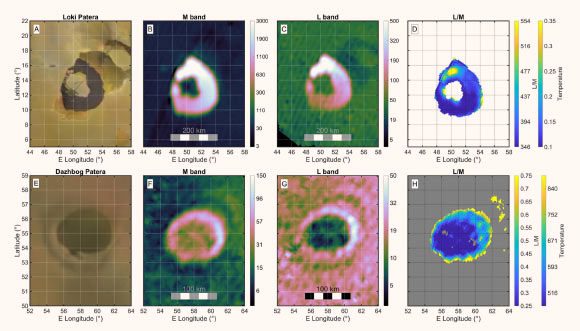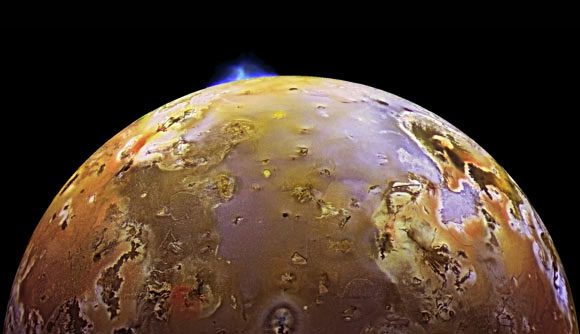NASA’s Juno spacecraft has discovered astonishing structures on the “hellish” exoplanet Io.
New analysis of data from the Jovian Infrared Auroral Mapper (JIRAM) on NASA’s Juno spacecraft has revealed mysterious “thermal rings” that blanket Jupiter’s moon Io – the most “furious” extraterrestrial world in our solar system.
In our Solar System, Io – the fourth largest moon – is the only place besides Earth known to have active volcanoes spewing hot lava.

Mysterious “thermal rings” on the exoplanet Io – (Photo: NASA).
This world boasts over 400 active volcanoes, formed and “fueled” by tidal heating, gravitational forces from Jupiter, and other massive nearby moons.
While many theories exist regarding the types of volcanic eruptions on this strange extraterrestrial world, there is very little supporting data.
According to Dr. Alessandro Mura, a member of the Juno mission team, what the spacecraft has just recorded is clear evidence of a familiar structure found on Earth: Lava lakes.
“In the region of Io’s surface where we have the most complete data, it is estimated that about 3% of the surface is covered by one of these molten lava lakes. This is a large crater formed when a volcano erupts and collapses,” Dr. Mura disclosed.

The volcanic terrain of Io – (Photo: NASA).
The new data not only highlights the abundant lava supply on Io but also provides a glimpse into what might be happening beneath the surface, including the circulation of lava flows.
Infrared images of some lava lakes on Io show a thin lava ring at the boundary, between the crust and the majority of the lava lake.
According to Dr. Mura, the prevalence of “thermal rings” may suggest that the most common type of volcanic activity on Io could be the upwelling from these massive lava lakes.
The lava layer is forced to break away from the lake’s edge, forming a typical lava ring, similar to those seen in lava lakes in Hawaii, which is famous not only for its white sandy beaches but also for its spectacular volcanic parks.
This once again demonstrates how volcanic activity on Io may resemble that on Earth.
Thus, Io also serves as a “laboratory” across time for humanity to better understand early Earth, when volcanic activity was far more catastrophic and frequent than today.
These new findings were recently published in the scientific journal Nature Communications.
Io, along with three other “Galilean moons” of Jupiter – Europa, Ganymede, and Callisto – are extraterrestrial worlds that scientists are “carefully tending to,” as each possesses unique characteristics.
Europa is considered one of the top contenders for extraterrestrial life, while the massive Ganymede is larger than Mercury and has a strong magnetic field. Ganymede and Callisto are also thought to have potential for habitability, albeit lower than that of Europa.





















































